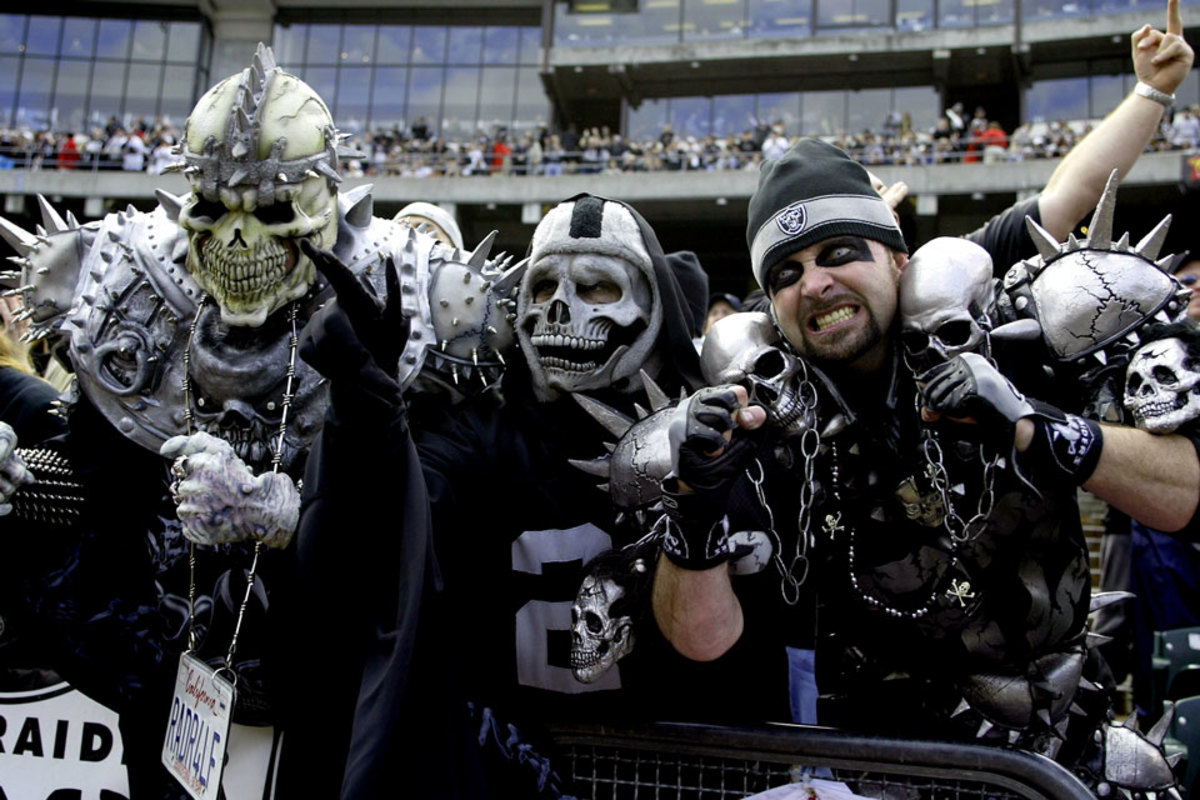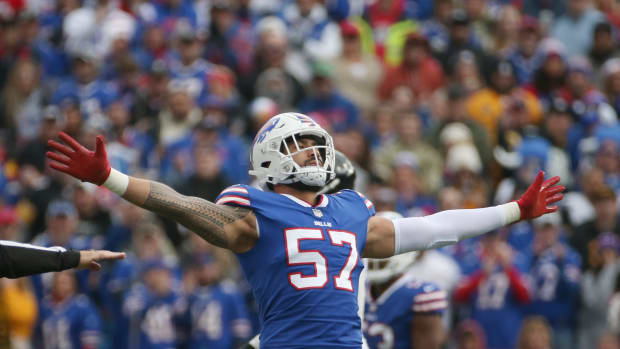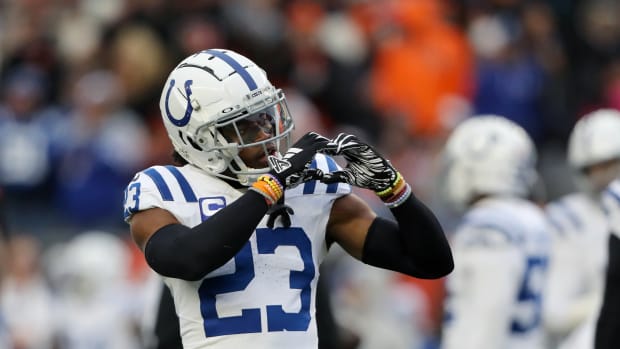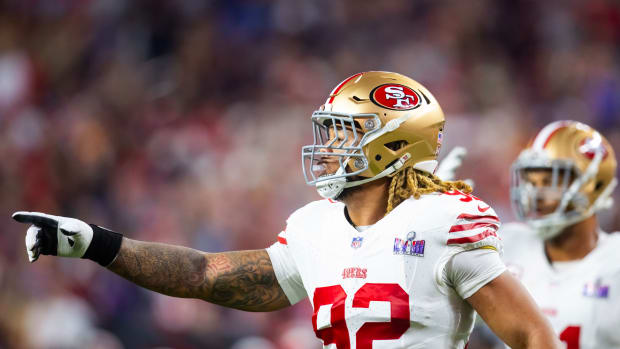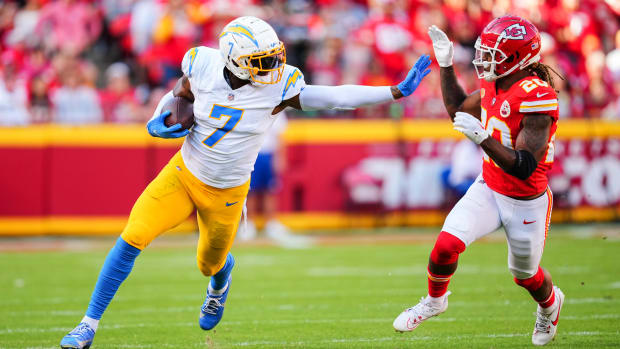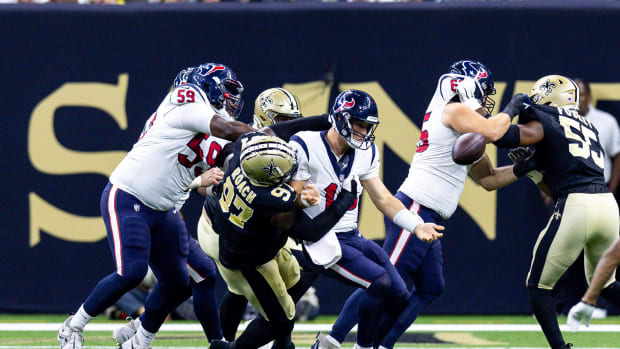Oakland Will Spend Money, Just Not All at Once
These are salad days for NFL owners. Forbes values 23 of the 32 franchises at over $1 billion, record-level television contracts are kicking in, and there are seven years remaining on a favorable CBA. With young players being squeezed (drafted players must sign four-year contracts at fixed rates) and older veterans being purged (just look at this week’s waiver wire), those now carrying the banner for improved plater economics are the “sweet spot” free agents emerging from rookie contracts who are between the optimal ages of 25 to 27. Two days into free agency, the team to watch is the Raiders, who are flush with salary cap room like no other in 2014.
Under the leadership of the late Al Davis, the Raiders were reluctant to pay market price for coaches, executives and front office staff. But they were always willing to pay—and overpay—players. In the agent community, the best call one could receive was from Davis. He loved players: picking them, counseling them and paying them.
In Davis’ later years, many of those contracts had consequences when the players didn’t perform well. When new general manager Reggie McKenzie entered the picture two years ago, he turned the page on dozens of contracts with years remaining, leaving about $56 million in “dead money” in their wake. While other teams operated on a $123 million cap in 2013, the Raiders were left to compete with 60% of that number, roughly $75 million in negotiable dollars for their active players.
That was then; this is now.
Having atoned for previous contractual sins, the Raiders are now playing at an advantage compared to the rest of the league. They entered the 2014 league calendar with close to $60 million in cap room. And with their minimal spending last year and team minimum spending accounting ahead for 2013-2016, all eyes are on the Raiders’ checkbook.
In its new financial era, Oakland allowed Jared Veldheer, Lamarr Houston and Rashad Jennings to leave while acquiring tackles Rodger Saffold ($42.5 million, $21 million guaranteed) and Austin Howard ($30 million, $15 million guaranteed). With their ample cap room, the Raiders likely structured those deals with disproportionate cap containment this year, allowing them to exit the contracts later, if need be, with little pain.
Reggie McKenzie was named the Raiders’ GM two years ago. (Marcio Jose Sanchez/AP)
Raider Nation, judging from Twitter and media reaction, was not impressed. After a two year grace period, fans are restless. In their minds, it’s time for a referendum on McKenzie. And then came word of a failed physical for Saffold, compounding the frustration. Evidently, the Raiders’ medical staff had serious enough concern to not sign off on Reggie’s strong interest in Saffold, while the Rams are willing to take him back despite any medical issues. While I am not qualified to evaluate Saffold and Howard compared to Veldheer or anyone else, I can comment on the man who made those decisions.
I worked closely with McKenzie for nine years in the Packers’ front office. When negotiating contracts, I would often rely on him for unfiltered views on players that both the agent and I were using as comparables. He had vast knowledge of players from every team and made it very clear whom he liked and whom he didn’t.
Reggie had his terms of endearment for players. He valued brute strength in linemen, both offensive and defensive, and would slow the film down to watch plays that showed one lineman physically overmatching another. In his Tennessee drawl he’d say, “Look at this big joker…BAM!” When Reggie referred to a player as “country strong,” I knew that was a high compliment. He felt that way about several of the offensive linemen we had in Green Bay, especially Chad Clifton, and I’m certain he feels that way about Saffold (his medical issue notwithstanding) and Howard.
And the slow teardown that the Raiders just endured fits Reggie well. If Reggie is anything, he is deliberate. He walks slowly, he talks slowly, he eats slowly and he will build slowly. Saffold and Howard were supposed to be the first expenditures of the $60 million in cap room, and there will be more, with reports of veterans Justin Tuck, LaMarr Woodley and Terrell Thomas set to visit. Cap room doesn’t have to be exhausted in March; it can be spent through December.
Reggie mirrors some elements of the two general managers we had in Green Bay. He has the courage of his convictions about players that Ron Wolf had, including blunt assessments of their talent. But Reggie also has the patience of Ted Thompson; he adheres to the draft-and-develop model of team-building. The latter means trusting scouts to constantly fill a pipeline of young talent, empowering coaches to play and develop young players, and identifying core players to secure contractually for the future.
I know the last thing Raider Nation wants to hear is a plea for more patience, especially after the Saffold twist, but a new era of cap prosperity has just begun. I admit to bias, but Reggie is consumed with finding the right players for his team, no matter how long it takes or where he finds them. Saffold and Howard, however uninspiring, were just the start of the book on 2014. Let’s see how the chapters play out.
10 Thoughts on the First Day of Free Agency
1. Although the reported numbers of all these free-agent contracts are splashy, they’re not what they appear to be. Pay no attention to total value; these contracts are essentially two-year deals (that’s the guaranteed portion of the contract) with nonguaranteed salaries in later years at the team’s discretion. In rare cases, portions of the guarantee will extend into the third year. The numbers in the media come from agents, who have every incentive to use the bigger number.
2. One unintended (or perhaps intended?) consequence of the three-day soft opening to free agency—when teams are not supposed to, ahem, formalize a contract—is that some pending free agents returned to their incumbent teams. There may be no greater leverage point for a player than the days prior to entering an open market. The Packers and Seahawks evidently trusted Drew Rosenhaus, the agent for Sam Shields and Michael Bennett, and the Vikings trusted David Dunn, who represents Everson Griffin, for an accurate assessment of the market. Those teams responded rather than letting the players look behind Door No. 2.
3. Shields’ contract resonates because it sets a template along with another eye-popping contract: Vontae Davis re-signing with the Colts. While Shields will earn $15 million this year, Davis will receive $20 million in guarantees. With only four-year deals, both should have another bite of the free agency apple before hitting the wrong side of age 30. This is the goal of player contracts: provide financial security yet leave another opportunity to maximize income.
4. The Broncos’ signing of Aqib Talib for a startling $26 million guaranteed evokes memories of their signing of Wes Welker a year ago. The Patriots had a price for both players and were unwilling to go above it to retain them. In both cases, the Broncos jumped their market. Aside from wanting their talent, my sense is Talib and Welker were even more desirable to Denver because they played for the Patriots.
5. One of the most active teams on the first day, the Buccaneers, owe a debt of gratitude to former general manager Mark Dominik for his cap management. He structured many of the team’s big deals in recent years—Vincent Jackson, Carl Nicks, Darrelle Revis—without using prorated signing bonuses, leaving a “clean cap” for the future. That structure now gives the Bucs the ability to part ways with Revis with no cash or cap obligations, clearing the deck for the new acquisitions.
6. It’s déjà vu with two of the most active teams in free agency. Both the Dolphins and Browns took big swings in free agency last year, and they were back at it on Tuesday, with the Dolphins investing heavily in Branden Albert and the Browns in veterans Donte Whitner and Karlos Dansby. The Dolphins have awarded two of the top guaranteed amounts in free agency over the last two years: $30 million to Mike Wallace and $25 million to Albert. As for the Browns, owner Jimmy Haslam is certainly not afraid to spend—including tens of millions on fired coaches and executives—to try to get things right in Cleveland.
7. The Falcons’ release of Tony Gonzalez is curious. When a player announces his retirement, it is usually a mutual parting: the player files his paperwork and the team places him on the reserve/retired list, carrying no cap or cash obligations. In this case, it appears that Gonzalez didn’t do his part, forcing the Falcons to actually release him prior to a scheduled roster bonus rather than retaining his rights. Perhaps the explanation is as simple as Gonzalez wanting to be free to sign a one-day contract with the Chiefs—and then be placed on their reserve/retired list—but something seems amiss here, perhaps suggesting that the Falcons-Gonzalez marriage did not end well.
8. The Saints’ signing of Jairus Byrd is puzzling for a team that is quite cap-strapped. Byrd’s contract has to be structured similarly to Drew Brees’ deal: heavy in (prorated) signing bonus with a very low first-year salary. Of course, cap-friendly now means cap-unfriendly later. Brees’ cap number this year is $8 million higher than it was two years ago. I sense Byrd’s Cap progression will be the same
9. Speaking of cap-strapped teams, the Cowboys’ and Steelers’ releases of DeMarcus Ware and LaMarr Woodley, respectively, are the “pay the piper” moments that fans ask about. Neither the mortgaging of Tony Romo’s contract nor the $10 million per-team cap increase this year helped Ware with the Cowboys, who seemed to lack a plan for his future. As for Woodley, he helped the Steelers with short-term cap room in recent years by mortgaging his contract, pushing cap charges down the line. His release accelerates a startling “dead money” charge of $14 million. Although it will be spread between this year and next as a post-June 1 release, Woodley will be one of the highest charges on the Steelers’ cap ledger both this year and next while he continues his career elsewhere. As readers know, I have been critical of the Steelers’ cap deferrals; no team has mortgaged more contracts since 2011. That strategy is now coming home to roost.
10. The Dolphins are trying scrub away the ugly locker room episodes that were detailed in the Wells Report. The head trainer and offensive line coach were fired; Richie Incognito will not be back; and Jonathan Martin was traded to San Francisco on Tuesday. Martin will come cheap: the Dolphins paid his bonus of $1.92 million as a rookie; the 49ers inherit two years of non-guaranteed salaries as Martin gets a much-needed change of scenery.
































